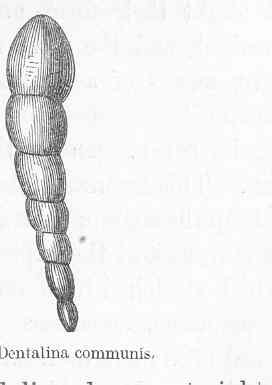Related Research Articles

The Fusulinida is an extinct order within the Foraminifera in which the tests are traditionally considered to have been composed of microgranular calcite. Like all forams, they were single-celled organisms. In advanced forms the test wall was differentiated into two or more layers. Loeblich and Tappan, 1988, gives a range from the Lower Silurian to the Upper Permian, with the fusulinid foraminifera going extinct with the Permian–Triassic extinction event. While the latter is true, a more supported projected timespan is from the Mid-Carboniferous period.

The Rotaliida are an order of Foraminifera, characterized by multilocular tests (shells) composed of bilamellar perforate hyaline lamellar calcite that may be optically radial or granular.

The Textulariida are an order of foraminifera that produce agglutinated shells or tests. An agglutinated test is one made of foreign particles glued together with an organic or calcareous cement to form an external shell on the outside of the organism. Commonly, the order had been made up of all species of Foraminifera with these types of shells, but genetic studies indicate these organisms do not form an evolutionary group, and several superfamilies in the order have been moved to the order Allogromiida. The remaining forms are sometimes divided into three orders: the Trochamminida and Lituolida, which have organic cement, and the Textulariida sensu stricto, which use a calcareous cement. All three orders or superfamilies are known as fossils from the Cambrian onwards.
The Moravamminacea is a superfamily of foraminifera within Fusulinida that comprises genera in which the proloculus is followed by a coiled or straight second chamber, and in which periods of growth result in partial or incipient septa. Contains three families, Caligellidae, Moravamminidae, and Paratickenellidae, with an overall range from the upper Silurian to the Lower Carboniferous (Mississippian).

The Geintizinacea comprises a superfamily of Upper Devonian to Upper Permian uniserial fusulinids, the chamber walls consisting of a dark microgranular inner layer and radially fibrous outer layer. Advanced forms show secondary lateral thickening
The Fusulinacea is a superfamily in the Fusulinida in which the test is spherical, discoida, or fusiform; commonly coiled, less often uncoiling in the late stage, numerous chambers per whorl; test wall of microgranular calcite in one to four layers. Tunnels or secondary foramina may result from partial resorption and secondary deposition may produce chomata, parachomate, tectoria, and axial fillings. Range: M Devonian (Givetian) – U Permian
The Fusulinidae is a family of fusulinacean foraminifera from the upper Carboniferous to the Upper Permian (Guadalupian), tests of which are fusiform to subcylindrical with walls of two to four layers. Are planispirally coiled throughout or with early whorls at a distinct angle to the later plane of coiling. Septa, flat to well fluted; tunnel, single; chomata variable in development.
Verbeekinidae are a family of large fusulinaceans characterized by subspherical, planispirally coiled tests and a long coiling axis. The wall is composed of a dense outer tectum and inner alveolar keriotheca. They are most prominent in Japan and Southeast Asia.

Lagenida is an order of benthic foraminiferal protists in which the tests (shells) are monolamellar, with walls composed of optically and ultra-structurally radiate calcite, with the crystallographic c-axes perpendicular to the surface. Lagenids first appear in the Upper Silurian and continue to the Recent. They are currently divided into two superfamilies, the older Robuloidacea which range from the Upper Silurian to the Lower Cretaceous (Albian) and the younger Nodosariacea, ranging from the Permian to Recent.
Nodosariacea is one of two superfamilies making up the foraminiferal order Lagenida. The other being the Robuloidacea. Of these two Nodosariacea is the more advanced, as well as being the younger.
Involutinida is an order of foraminifera included in the Spirillinata found in the fossil record from the early Permian to early Late Cretaceous (Cenomanian).
Miliamellus is a genus of Cenozoic benthic foraminifera with tests made of imperforate opaline silica. It is the only genus in the order Silicoloculinida and the family Silicoloculinidae. It is sometimes referred to by the junior synonym Silicoloculina.

Cibicides is a genus of cosmopolitan benthic foraminifera known from at least as far back as the Paleocene that extends down to the present.
Discorbis is a genus of benthic Foraminifera, that made its first appearance during the Eocene. Its present distribution is cosmopolitan.
Rosalina is a genus of foraminifera included in the rotaliid family Rosalinidae.
Schwagerina is an extinct genus of fusulinacean Foraminifera that is used as an Early Permian index fossil. The overall shape of the shell or test is fusiform to subcylindrical, the spirotheca, or outer test wall, is thick, and composed of tectum and alveolar keriotheca; the septa are fluted throughout the length of the shell, intense to top of chambers in some, only in lower parts in others; axial fillings highly variable, chomata distinct or thin and discontinuous.
Sigmoilina is a miliolid genus, referring to the foraminiferal order Miliolida, characterized by an assymmetricall biconvex test formed by strongly overlapping chambers, one-half coil in length, that form a sigmoid (S-shaped) curve in cross section. The strongly overlapping chambers obliterate earlier ones from view resulting in the compressed biloculine appearance, differing from the squat, depressed biloculine form of Pyrgo and Biloculina. The test, as for all Miliolida, is porcelaneous and imperphorate, the terminal aperture, with tooth, the only point of egress and ingress for the animal.

Helen Niña Tappan Loeblich was an American micropaleontologist who was a professor of geology at the University of California, Los Angeles, a United States Geological Survey (USGS) biostratigrapher, and a scientific illustrator whose micropaleontology specialty was research on Cretaceous foraminifera.
Alfred R. Loeblich Jr (1914–1994) was an American micropaleontologist. He was married to Helen Niña Tappan Loeblich and the two co-authored a number of important works on the Foraminifera and related organisms.
Spirocyclina is a genus of large forams, with a flat test as much as 10mm in diameter. Coiling is planispiral to slightly asymmetric and mostly involute, some becoming uncoiled with a straight final stage. The final whorl, or stage, has about 25 strongly arcuate chambers. Composition is of agglutinated matter, the outer layer of the wall imperforate. Chambers are subdivided into secondary chamberlets by internal structures. The aperture consists of a double row of pores on the apertural face. Anchispirocyclina and Martiguesia are among related genera.
References
- Loeblich, Alfred R.; Tappan, Helen (1964). Moore, R.C. (ed.). Protista 2: Sarcodina Chiefly "Thecamoebians" and Foraminiferida. Treatise on Invertebrate Paleontology. Vol. C (5th ed.). Geological Society of America. ISBN 978-0-8137-3003-5.
- Alfred R. Loeblich Jr and Helen Tappan,1988. Forminiferal Genera and their Classification. Van Nostrand Reinhold.